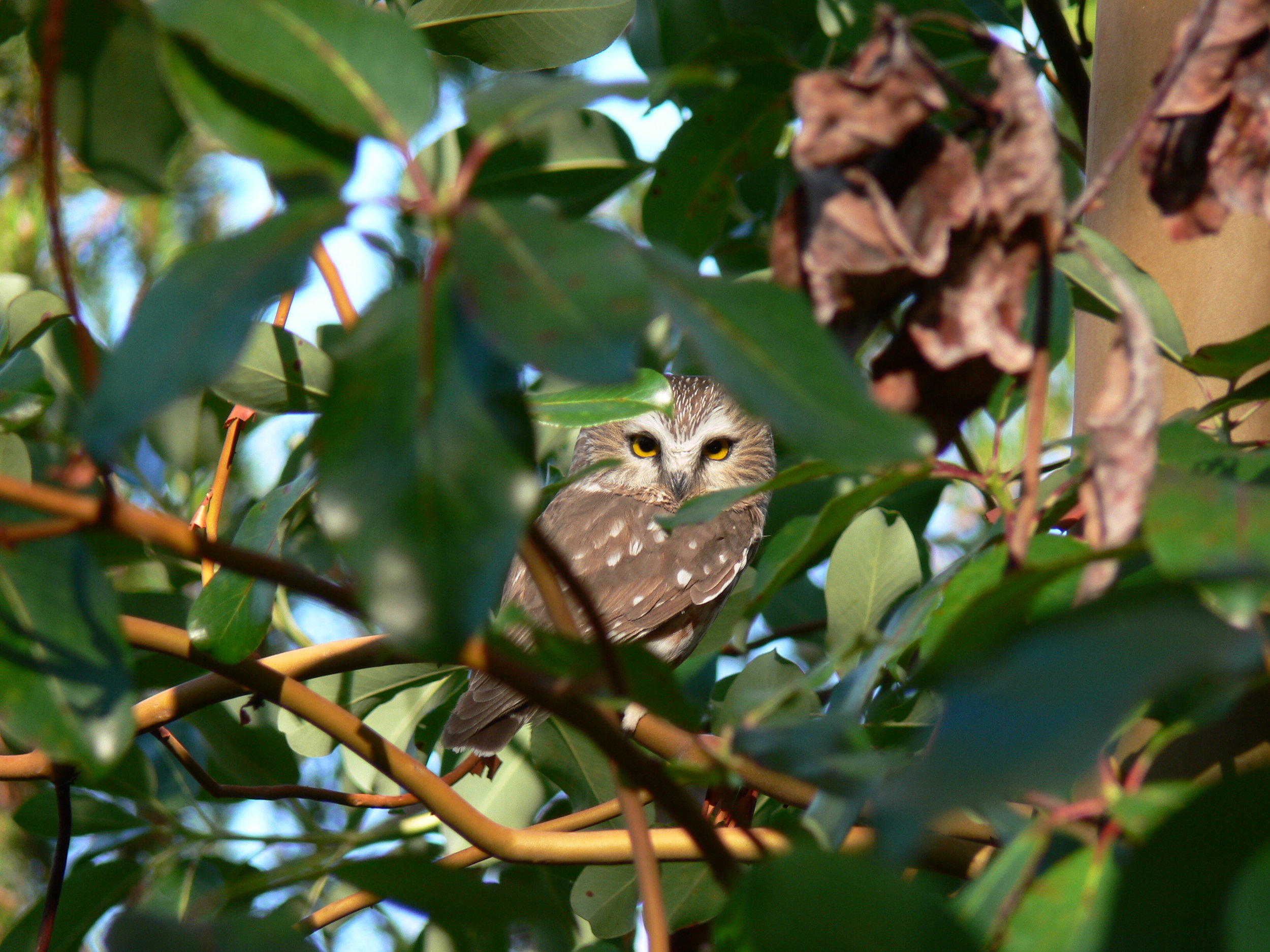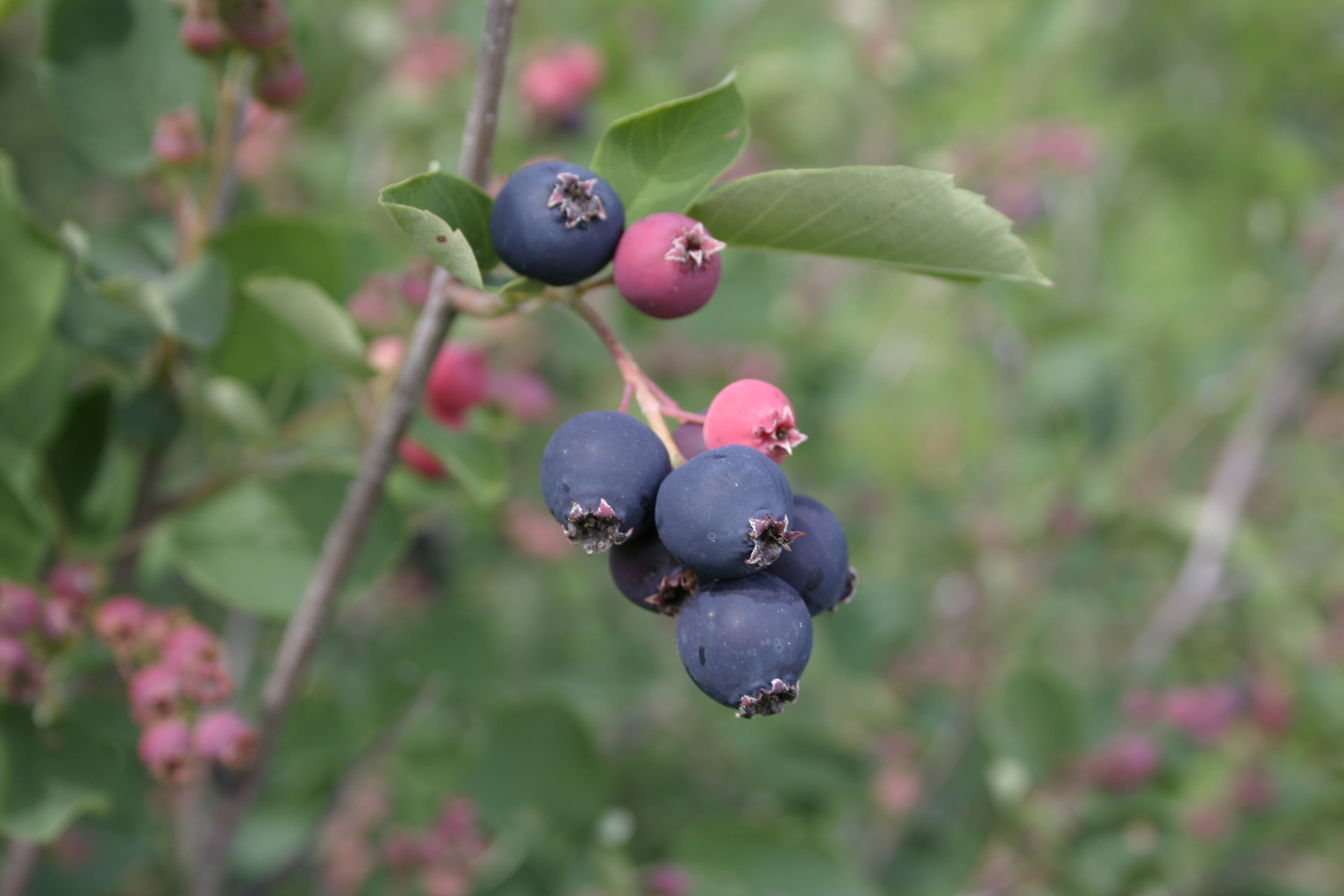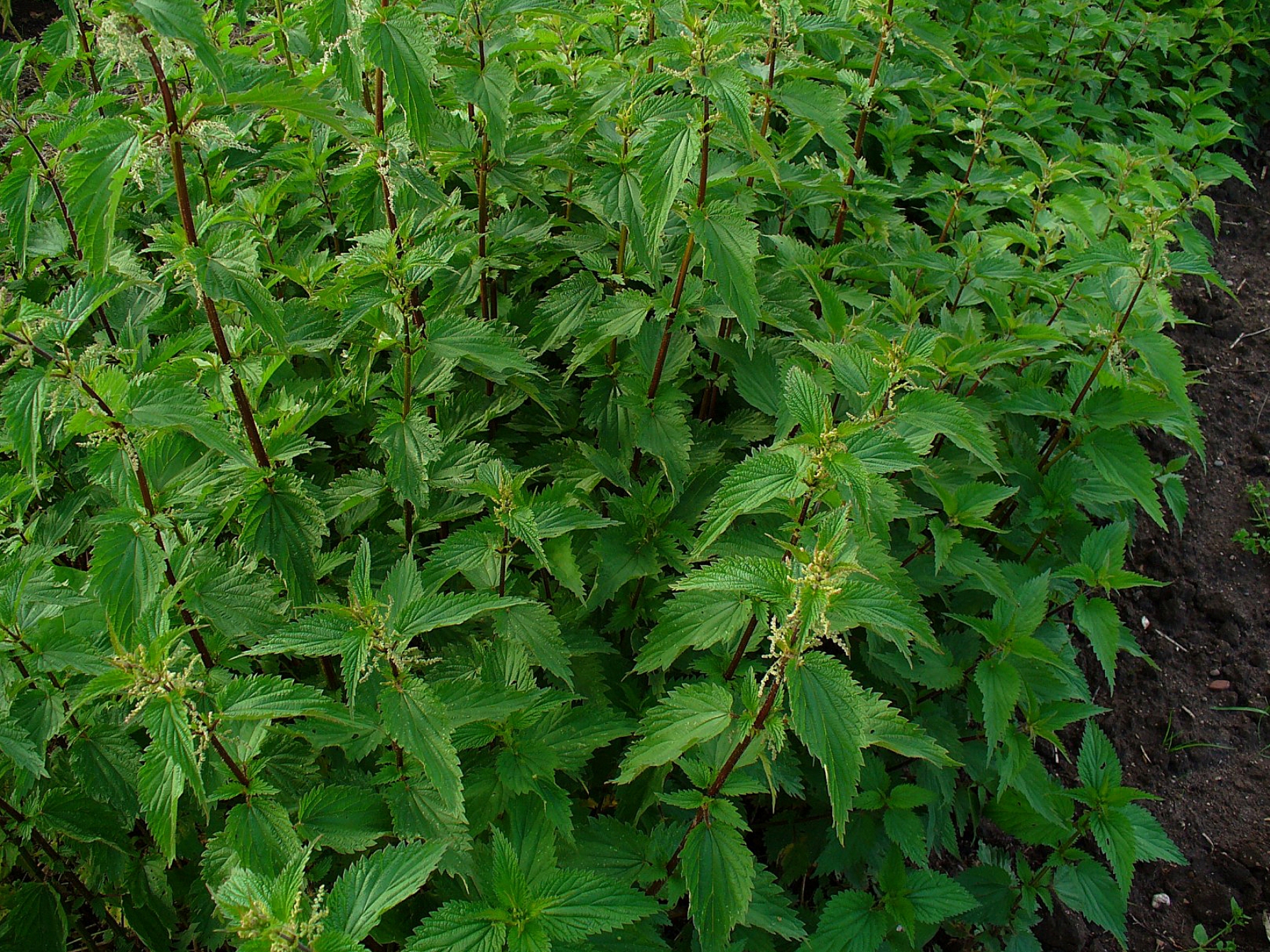Northern Saw-whet Owl (Aegolius acadicus)
The Northern Saw-whet Owl is a small owl, but don’t let their small stature fool you! It just screams attitude with bright yellow eyes staring at you from its large cat-like face. You will probably not spot this bird as its coloring blends in with its habitat, but you might hear their unique call echoing through the forest.
Photo by Doris May
Why They Matter to Us
Saw-whet Owls are excellent rodent hunters and help keep rodent populations down.
Since these owls can nest in nest boxes, we can observe them and learn more about their behavior.
This species is very secretive, so little is understood about the population trends. There probably has been a decline due to forest habitat loss.
How You Can Help
Put up a Northern Saw-whet nest box. You can build your own box with these blueprints.
Avoid the use of poison to control rodent populations as these owls may become poisoned by eating the tainted rodents.
Avoid cutting down old, dying or dead trees as they can be perfect places for owl nests.
Support protected areas in the Edmonton area such as those conserved by EALT! You can donate or volunteer your time to help with conservation efforts!
Juvenile Saw-whet Owls Photo by Marg Reine
How to Identify
Identify by Sight
Adults have a mottled brown and white body
Juveniles have a cinnamon belly and a brown back
Typically a white ‘V’ in between their eyes
Bright yellow eyes
Identify by Flight
You would typically not spot this bird by flight but if you do, characteristics are:
Fluttering wing beats
Direct silent flight path from one point to another
White legs
Identify by Sound
The Northern Saw-whet Owl has a distinctive song of “too-too-too”, used to advertise territory and courtship typically heard from January to May. They also make other sounds including high “tssst” calls, and snapping their beak. Click here to listen to the different calls of the Northern Saw-whet Owl.
Photo by Betty Fisher
Where to Find
Northern Saw-whet Owls are found in southern Canada, throughout the United States and into Mexico. Some are year-round residents and others are long-distance migrants which usually spend the winter in the States.
This species prefers to reside in mature forests, nesting in deciduous trees and roosting in conifer trees for protection. Despite this preference, this species has been found nesting in other habitats including coniferous swamps, disturbed forests and riverside forests like our own River Valley! The Northern Saw-whet Owl will also nest in nest boxes successfully.
Social Life
Northern Saw-whet Owl nesting behavior is partially understood but more research is needed due to its elusive nature.
Males draw in females to a potential territory with their “too-too-too” call.
The female probably builds the nest but the male helps choose potential sites.
The females do the nest incubation and brooding while the males do all the hunting.
Babies are born white and semi-helpless with closed eyes.
They will typically find new partners every year.
Food Chain
Owls are predators and the Northern Saw-Whet is no exception, targeting mice and other rodents.
If migrating, the Saw-whet may target birds, insects or even inter-tidal invertebrates if the bird is near the coast.
Northern Saw-whet Owls are prey for other larger birds of prey including Great Horned Owls and Peregrine Falcons.
Photo By Doris May
Fun Facts
Although there is no consensus as to why this owl species was given its name, it is theorized that one of its calls sounds like sharpening a saw on a whetting stone.
The migrating owls even cross large bodies of water. One owl flying over the Atlantic Ocean landed on a ship 70 miles from land.
The oldest wild bird on record was at least 9 years and 5 months old.
After the youngest chick in the nest is 18 days old, the female will leave the nest, and it’s young to the male to finish raising. Without the female to clean the nest, it is full of feces, pellets and rotten meat 10 to 14 days later when the young leave the nest.
These owls are hard to spot. The best way to find one as a bird watcher is to look for flocks of songbirds diving around a single point. A predator is definitely there!
Sources
BirdLife International 2016. Aegolius acadicus. The IUCN Red List of Threatened Species 2016: e.T22689366A93228694. Downloaded on 25 October 2018.
Northern Saw-whet Owl information page from All About Birds.
Northern Saw-whet Owl information page from What Bird.











